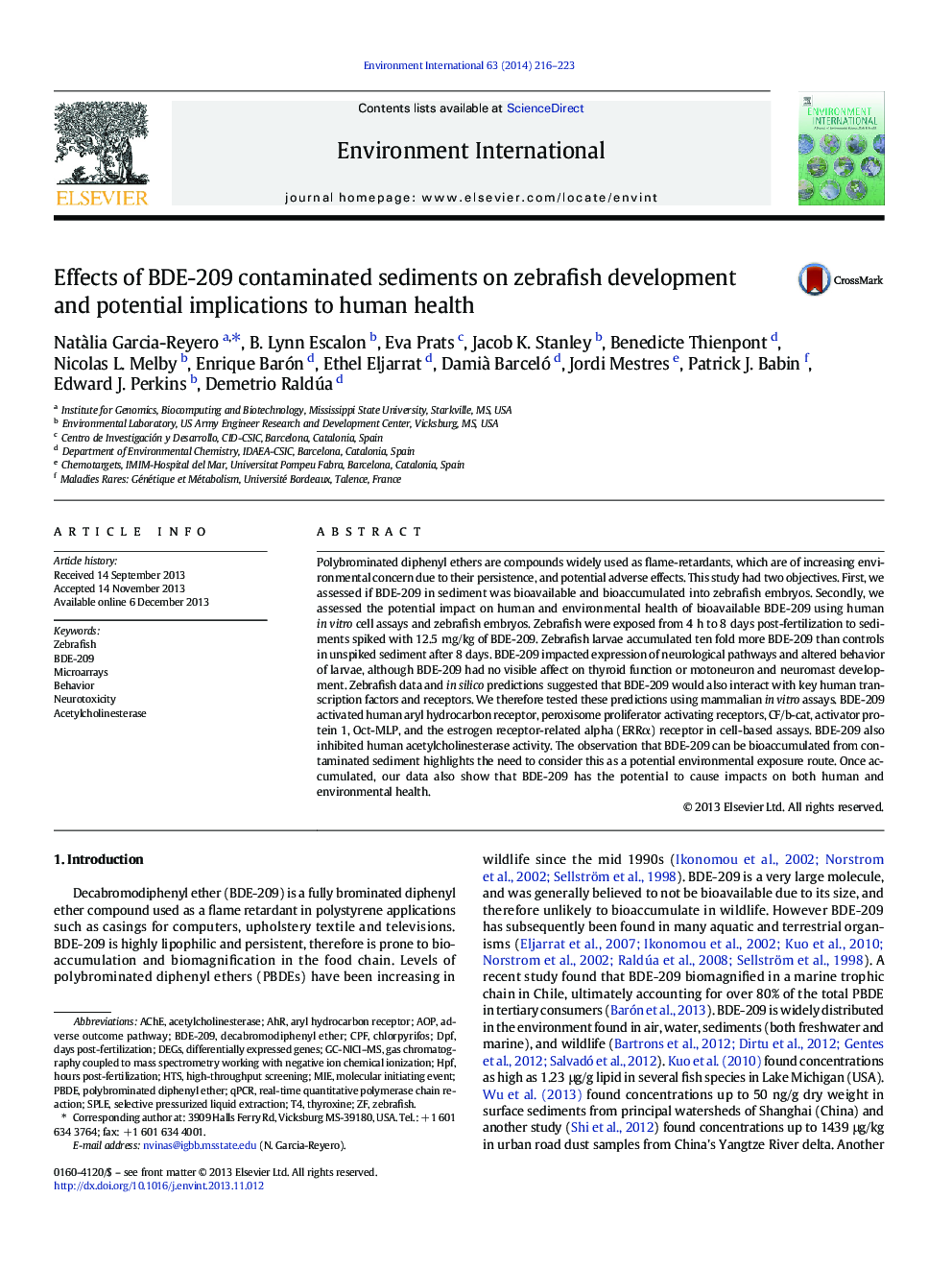| Article ID | Journal | Published Year | Pages | File Type |
|---|---|---|---|---|
| 6314088 | Environment International | 2014 | 8 Pages |
â¢BDE209 from sediments was bioavalilable for zebrafish larva.â¢BDE-209 affected zebrafish behavior.â¢BDE-209 perturbed pathways and transcription factors in mammalian assays.â¢BDE-209 is an acetylcholinesterase inhibitor.
Polybrominated diphenyl ethers are compounds widely used as flame-retardants, which are of increasing environmental concern due to their persistence, and potential adverse effects. This study had two objectives. First, we assessed if BDE-209 in sediment was bioavailable and bioaccumulated into zebrafish embryos. Secondly, we assessed the potential impact on human and environmental health of bioavailable BDE-209 using human in vitro cell assays and zebrafish embryos. Zebrafish were exposed from 4 h to 8 days post-fertilization to sediments spiked with 12.5 mg/kg of BDE-209. Zebrafish larvae accumulated ten fold more BDE-209 than controls in unspiked sediment after 8 days. BDE-209 impacted expression of neurological pathways and altered behavior of larvae, although BDE-209 had no visible affect on thyroid function or motoneuron and neuromast development. Zebrafish data and in silico predictions suggested that BDE-209 would also interact with key human transcription factors and receptors. We therefore tested these predictions using mammalian in vitro assays. BDE-209 activated human aryl hydrocarbon receptor, peroxisome proliferator activating receptors, CF/b-cat, activator protein 1, Oct-MLP, and the estrogen receptor-related alpha (ERRα) receptor in cell-based assays. BDE-209 also inhibited human acetylcholinesterase activity. The observation that BDE-209 can be bioaccumulated from contaminated sediment highlights the need to consider this as a potential environmental exposure route. Once accumulated, our data also show that BDE-209 has the potential to cause impacts on both human and environmental health.
